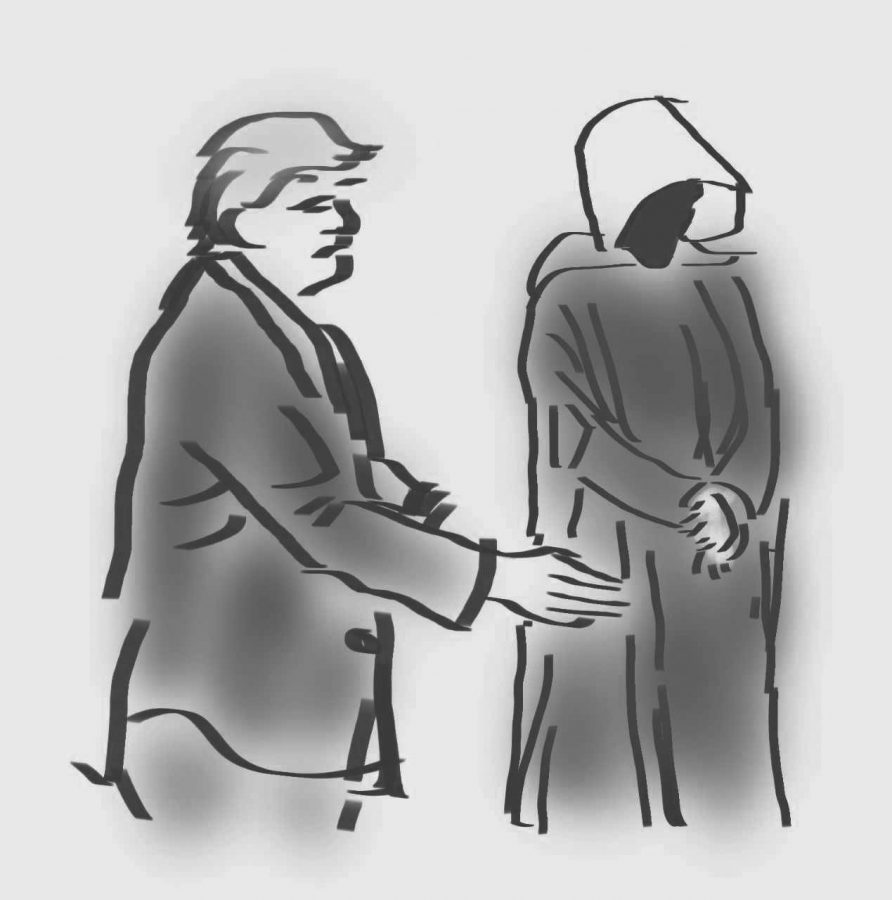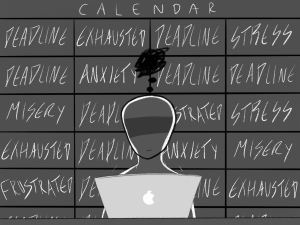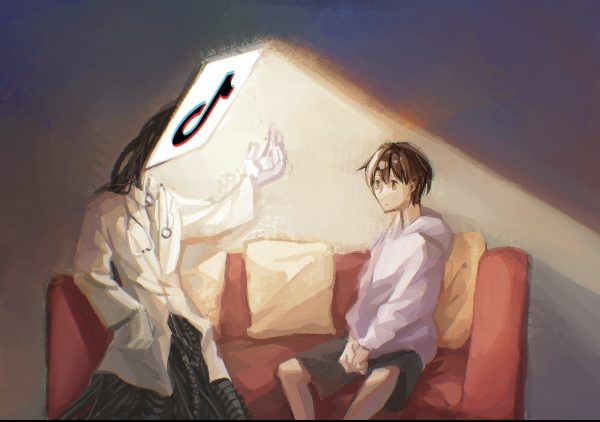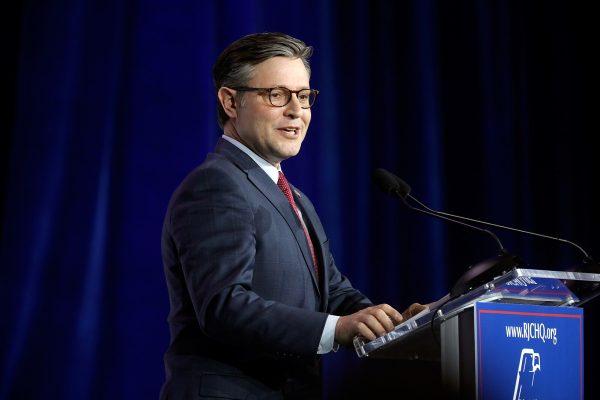Atwood grabs ‘em by the possibilities
October 30, 2019
The Testaments” (2019) is a riveting sequel to “The Handmaid’s Tale” (1985) by Margaret Atwood. It’s a powerful novel about three unlikely women coming together and telling their stories despite the risks. The three main characters are Agnes, the daughter of an important commander who struggles with the concept of becoming a wife even though she’s been raised her whole life to be one, Daisy, the daughter of anti-Gilead activists who live in Canada, tells her account of sneaking into Gilead, and Aunt Lydia, one of the Aunts from “The Handmaid’s Tale” who isn’t so loyal to Gilead after all.
“The Handmaid’s Tale” is narrated by Handmaid Offred. As a handmaid, her sole purpose is to conceive a baby. She is not allowed to read or close her bedroom door, and every public move she makes is watched by The Eyes, Gilead’s police force. Both books are set in the dystopian world of Gilead. A world controlled by men, women have few to no rights, and the scant number of women who do are still controlled by their husbands, The Eyes and the government.
Atwood’s “The Handmaid’s Tale” was ahead of its time, making the novel much more profound, especially because it predicted many aspects of modern American life. Being in a country run by a man who has no respect for women, a country that once had solid female reproductive rights that are now being challenged in many states, one may feel that the world of Gilead is not that far away from our current reality.
President Donald Trump nonchalantly remarked in a taped discussion with Billy Bush, “You know, I’m automatically attracted to beautiful— I just start kissing them. It’s like a magnet. Just kiss. I don’t even wait. And when you’re a star, they let you do it. You can do anything… Grab ’em by the pussy. You can do anything.” Women in our society are too often seen as property, useful only for sex and their bodies. This is much like the dystopian world of Gilead. In the current government of the United States, President Trump has displayed this viewpoint as well.
The end of “The Handmaid’s Tale” left Atwood’s readers hungry for a sequel to answer their many questions. Atwood delivered on this desire 35 years later, with the politically-charged sequel, “The Testaments”. One of the main narrators, Daisy, a Canadian, is an Anti-Gilead activist. In the beginning of the book, she talks about the protests in Canada against Gilead, how they learn about it in school and the “Pearl Girls” who are missionaries that come into Canada trying to recruit women into Gilead.
“The Handmaid’s Tale” was simply an idea, a possibility of a world that could happen (modeled after George Orwell’s 1984, Aldous Huxley’s Brave New World and other pieces of dystopian-fiction). “The Handmaid’s Tale” was meant to mirror aspects of dictatorships from different eras throughout the world–not the United States in its current form.
“The Testaments”, on the other hand, is a searing political statement not about a possibly future, but an actual present. Atwood wrote in the acknowledgements of “The Testaments”, “Thirty-five years is a long time to think about possible answers, and the answers have changed as society itself has changed, and as possibilities have become actualities.”
“The Testaments” is a call to women to speak their truth, be brilliant, cunning and strong. By itself, there is no doubt that it is a powerful book, a must read. But “The Handmaid’s Tale” was not designed to be a political book, while “The Testaments” was, and as a sequel it takes away from both itself and “The Handmaid’s Tale”. There is no doubt that Atwood has written yet another moving and thought-stirring book, but, to make “The Handmaid’s Tale” series political draws away from its original power, the awe of it being ahead of its time. Both novels are great literature on their own, they each have their own purpose. Take each book on its own, not as a pair, or read “The Testaments” as a conscious sequel.

























